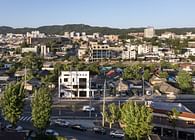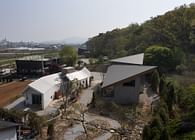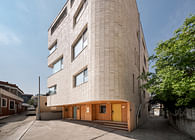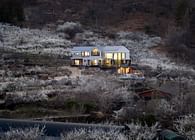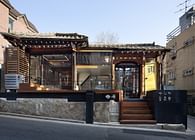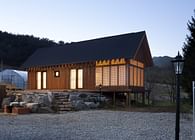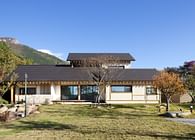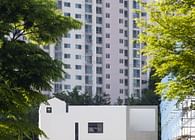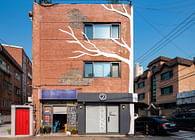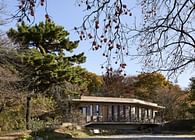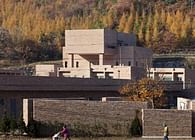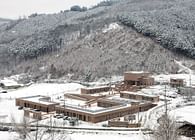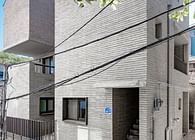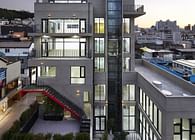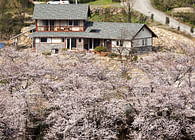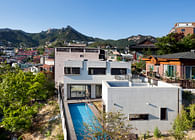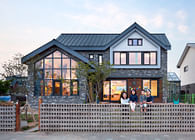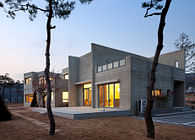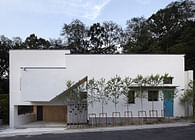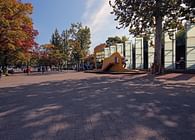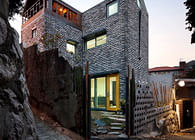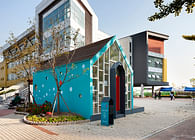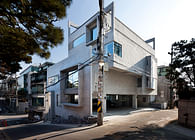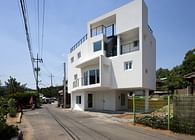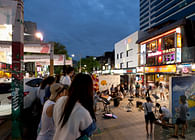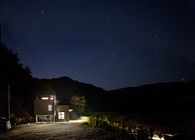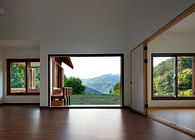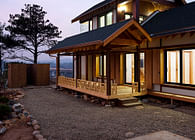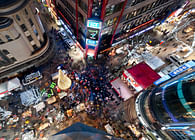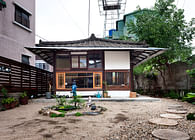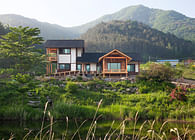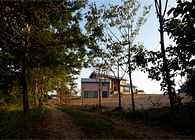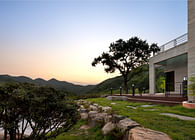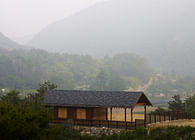
Seoul, KR
The Eunpyeong Hanok Village in Seoul is a district situated between a large apartment complex and Bukhan Mountain. We designed a hanok (traditional house) in the block.
The word ‘Hanok’ is very ambiguous term. After the modernization, the houses that were built in Western style were called 'Yangok' (literally meaning Western House) and Koreans began to call the regular houses as Hanok (meaning Korean house) as an opposite concept. However, the phrase is a platitude expression that can not contain the full emotion towards our old house.
Recently, we have built several houses that contain the spatial concept of Hanok but they were built in modern frame system. In modern Korea, Hanok only remains intact in some traditional villages and in designated areas, including Bukchon in Seoul. As the government enforced its policy to support construction of Hanok, the number has been gradually increasing.
The owner who bought a lot in Eunpyeong Hanok village three years ago came to us. Eventually we designed a Hanok built in traditional construction process. The role of the carpenter who knows the traditional method is crucial in the construction process of Hanok. Fortunately, an experienced carpenter Hwang In-Beom helped us to fulfill our design intent.
The name of the house is Su-o-jae, which means “to protect one’s integrity.” Su-o-jae is the name of the house that Jeong Yak-yong’s (a famous Joseon scholar) brother lived in. Initially Jeong thought lightly about the meaning, but after many years, he wrote <Su-o-jae-gi> (Essay on Su-o-jae) when he realized how difficult and valuable it is to protect one’s integrity
In fact, we felt the same designing this Hanok. For an architect familiar with learning and designing modern architecture, it was burdensome to design the hanok built in traditional way. It felt like singing alone in an empty room with a ringing sound.
The site is shallow and horizontally elongated. Normally, Hanok consists of several houses with different residents and different uses, including the main building and a detached house in a larger area. The yards covered by each house and the outer spaces in between provide wealth of spatial difference in Hanok.
By comparison, the expensive land price of Hanok Village forces the lot to be smaller, and the site touches the path only slightly, which is not suitable for traditional Hanok either. In addition, unlike traditional one storey Hanok, it is usually built two storey high, so the houses stand next to each other.
The house is divided into two independent mass. Residence for married couple and two sons, it is thought that when children grow up they can live in a detached house or it can be rented. The annex building is also connected to the gate and works as a medium to hide and reveal the madang (courtyard) on entry. Entering through the narrow opening, one could sense a larger spatiality of openness and visual effects of madang.
When one enters the traditional Hanok, it is through the madang. But now one goes through vestibule. It was inevitable to spare space for taking off shoes. The basement is for exercise rooms and study. The kitchen, living room and the bedroom are on the first floor and son's rooms are on the third floor. And the courtyard that penetrates the floors above form the basement works as a well to draw the light and wind.
The house has a traditional gabled roof to look simple and honest, but it looks more showy than intended. The banister rails were also designed as a flat shape, rather than a curve, but they are still more decorative than modern houses. We have no choice but ask time to let in the energy of Bukhan mountain, which is spread out to the north of the house.
Status: Built
Location: Jingwandong, Eunpyeong-gu, Seoul, Republic of Korea
Firm Role: design, supervision
Additional Credits: Project Overview
Architect : Hyoungnam Lim, Eunjoo Roh in studio_GAON
Project Team : Sungpil Lee, Seongwon Son, Joowon Moon,
Laeyeon Kim, Minwoo Lee, Ryeojin Jeon
Photographs : Youngchae Park
Location : Jingwandong, Eunpyeong-gu, Seoul, Republic of Korea
Use : House
Site Area : 230.4㎡
Building Area : 97.74㎡
Gross Floor Area : 153.36㎡
Building Scope : 2F
Height : 7.97m
Building-to-Land Ratio : 42.422%
Floor Area Ratio : 66.56%
Structure : Wood Frame Structure
Finish : Korean Traditional house exterior, Ceramic tile
Construction : Seoul Hanok (Inbeom Hwang)
Supervision : studio_GAON
Design Period : 2015.11-2016.10
Construction Period : 2017.02-2017.12
